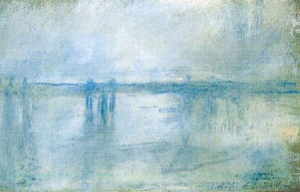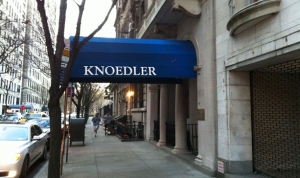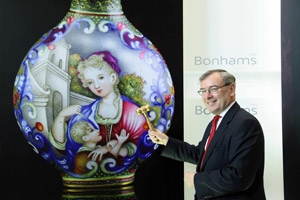|
Displaying items by tag: Forensic
A federal judge has dismissed a lawsuit brought against The New Yorker and one of its writers by Peter Paul Biro, a forensic art expert. Biro was the subject of a 16,000-word article about art authentication and the process of matching fingerprints on paintings to the artists who created them. Biro claimed that the article, which was published in The New Yorker in July 2010, left readers with a negative impression of him and his work.
Judge J. Paul Oetken dismissed the case saying that the writer, David Grann, did not act “recklessly” or vilify Biro. The ruling, which was released on Thursday, August 1, 2013, applied to Gawker Media, Business Insider, two additional websites and a biography of Jackson Pollock published by Yale University that mentioned Grann’s New Yorker article.
Biro’s lawyer, Richard Altman, said that they plan to appeal the court’s ruling.

Olga Dogaru, a Romanian woman who told investigators that she burned seven modern art masterpieces to protect her son, denied her claim in court on Monday, July 22, 2013. Dogaru’s son, Radu, was one of six suspects involved in the Kunsthal Museum heist, the biggest art-related robbery to take place in the Netherlands in years.
During the hearing, Dogaru alleged that she “made up” the story about incinerating $130 million worth of art in a desperate attempt to guard her son, who had admitted to stealing the paintings last October. If she is found guilty of “destruction with very serious consequences” Dogaru could serve up to 30 to years in prison under Romanian law. Last week, news circulated that forensic investigators had found trace evidence in the ash in Dogaru’s stove.
The heist took place on October 16, 2013 and proceeded to shake the art world. The six suspects made off with Pablo Picasso’s Tete d’Arlequin, Claude Monet’s Waterloo Bridge, London and Charing Cross Bridge, London, Henri Matisse’s La Liseuse en Blanc et Jaune, Paul Gauguin’s Femme devant une fenetre ouverte, dite la Fiancee, Meyer de Haan’s Autoportrait, and Lucian Freud’s Woman with Eyes Closed in less than 90 seconds. The works were on loan from the Triton Foundation to celebrate the Kunsthal Museum’s 20th anniversary.
The suspects will stand trial next month.

Prominent Canadian art collector David Mirvish filed a lawsuit on Friday, February 22, 2013 against the disgraced New York-based art gallery, Knoedler & Company. Since closing its doors in late 2011, Knoedler & Company has been accused by multiple clients of selling forged paintings, which were acquired by the gallery from Long Island dealer Glafira Rosales. Mirvish’s is the fifth lawsuit against Knoedler since 2011.
However, Mirvish’s claim is slightly different than its predecessors. While the other lawsuits accused Knoedler of passing off fake Jackson Pollock (1912-1956), Robert Motherwell (1915-1991), and Mark Rothko (1903-1970) paintings as the real deal, Mirvish claims that the works he purchased from the gallery were authentic. Instead, Mirvish is arguing that he lost out on millions of dollars in profits when Knoedler failed to sell three Jackson Pollock masterpieces he purchased jointly with the gallery.
Between 2002 and 2007 Mirvish purchased two paintings attributed to Pollock and bough a half stake in a third for $1.6 million. The sole purpose of Mirvish’s dealings with Knoedler was to resell the works for a profit. One of the Pollock paintings sold to collector and hedge fund manager Pierre Lagrange for $17 million in 2007, but in 2011, the day before Knoedler shut down, Lagrange announced that he would be filing a lawsuit against the gallery as forensic testing suggested the painting was a fake. The Lagrange suit was eventually settled but Mirvish was not involved and refused to return the money he made off of the deal.
Mirvish is now seeking reparations for the two unsold Pollocks, claiming that Knoedler breached its agreement when the gallery suddenly went out of business. Mirvish is asking Knoedler to return the two paintings, referred to as “Greenish Pollock” and “Square Pollock,” as well as reimburse him for his $1.6 million stake in the third painting, referred to as “Silver Pollock.” Even though Mirvish only paid Knoedler $3.25 million, half of “Greenish Pollock” and “Square Pollock’s” purchase prices, he claims that Knoedler’s violation of contract entitles him to both paintings.
Nicholas Gravante, the lawyer of Knoedler’s former president, Ann Freeman, is representing Mirvish. Freeman is not named as a defendant in Mirvish’s case and she has maintained that all works acquired from Rosales are genuine. Rosales is currently under investigation by the F.B.I.

Domenico De Sole, chairman of the fashion powerhouse, Tom Ford International, is suing Michael Hammer, chairman of the disgraced Knoedler Gallery. De Sole and his wife, Eleanore, claim that Hammer sold the couple a fake Mark Rothko (1903–1970) painting (Untitled, 1956) for $8.3 million back in 2004. The allegation against Hammer is an amendment to a lawsuit that was originally filed against Knoedler on March 28.
De Sole’s suit is one of three against Knoedler and its former director, Ann Freedman. The suits all claim that Knoedler Gallery knowingly sold counterfeits. Between the three cases, the plaintiffs are seeking more than $70 million in damages.
Knoedler closed on November 30, 2011 after 165 years in the art world. A claim that the gallery sold a fake Jackson Pollack (1912–1956) painting for $17 million was the reason for Knoedler’s abrupt departure.
In addition to Hammer, the De Sole suit has introduced three new defendants to the ongoing Rothko/Knoedler case. Glafira Rosales, a Long Island art dealer who consigned artworks to Knoedler is newly involved as is as Jaime Andrade, a former Knoedler employee who introduced Rosales to the gallery. Jose Carlos Bergantinos Diaz, Rosales companion and business partner has also been added to the suit.
When Knoedler sold Untitled, 1956 to the De Soles, Freedman claimed that a Swiss collector had bought it directly from Rothko, and after the collector’s death, Knoedler was responsible for selling the work on his son’s behalf. The gallery had bought the painting from Rosales a year earlier for $950,000 and relied on her work about the painting’s provenance. Suspicions arose after Knoedler Gallery closed amidst the Pollack scandal and the De Soles’ lawyers hire a forensic conservator who found the painting’s marks and composition were inconsistent with Rothko’s technique.

Cranfield University and global arts & antiques auctioneer Bonhams are pioneering new forensic technology to authenticate antique porcelain and ensure fakes don’t find their way to market.
The collaboration combines major advances in the identification of ever-smaller proportions of trace elements with essentially non-invasive sampling.
The technique will be particularly useful in the field of Chinese art which has become one of the hottest sectors of the global art market in recent years, and nowhere more so than in the demand for fine antique porcelain.
While prices for the finest Imperial porcelain have soared, so have the ambitions of highly accomplished fakers, seeking to infiltrate spectacular new fakes into a market feverish for top quality material.
Technology exists to distinguish scientifically the genuine treasures from the fakes, but the technology normally used is over 40 years old, invasive, and no longer entirely trustworthy.
Forensic science often manages to identify small differences in very rare elements in an object. These ‘trace elements’ can often identify an object's place, and sometimes date, of origin if a good database already exists for similar objects.
‘Trace element analysis’ is regularly used in many kinds of detective work, from establishing the original source of premium organic foods to researching ‘scene of crime’ evidence.
It has never been practical in the past to use it systematically in the art market because obtaining samples has often been unacceptably destructive and databases are neither detailed nor specific enough. The Cranfield/Bonhams project aims to change that.
“This is the most exciting art-authentication project I have ever seen,” said Colin Sheaf, chairman of Bonham’s Asia, and the global auctioneer’s senior Chinese art specialist.
|
|
|
|
|